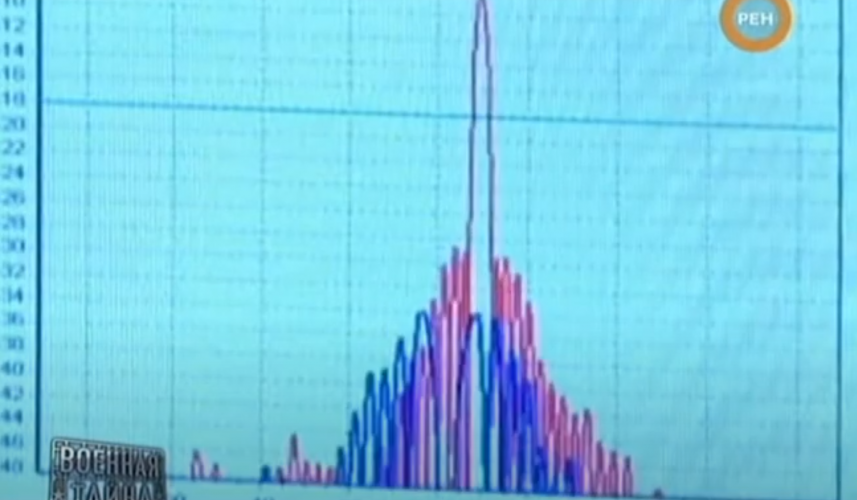Great work Stealth
Also I’m suprised we never posted this
View: https://m.youtube.com/watch?v=cieLN4_tn0A&pp=ygULaXJiaXMgcmFkYXI%3D
As mentioned earlier,that video was made in 2006 during flight test of the test model of N035 Irbis inside of the prototype Su-30MK2 number 503 blue.
Doing radiating element counts for Irbis. Although it's PESA, it is still a Phased array radar where the number of radiators matter.
View attachment 704121
From the counts, one can try glean into some parameters e.g antenna gain from simple equations and some basic assumptions.
For gain it can be found from :
G=N*PI()*Efficiency
Where N is the element counts, Pi is pi (3.14 something) and Efficiency, the efficiency factor here for phased array are determined via its radiation pattern, which would mean knowing the weighting function for the antenna allows first cuts for estimating efficiency. The typical and relatively popular weighting function is Taylor -40 dB which give beamwidth broadening factor (k) of 1.25 and aperture efficiency of 0.76.
Using the factor into the Irbis element counts yield 36.4 dB. About 0.4 dB more than Bars despite smaller diameter (0.9 vs 1 m) of Irbis.
Knowing the element counts may also frequencies to be estimated too. This however also requires that the physical antenna aperture (or at least the part of the aperture that occupied by the radiators) to be known. Irbis however have publicly available information of 0.9 m diameter, thus physical area of 0.63 sqm. This can then be divided by the Element counts to find the element area. This element area can then be directly used to estimate operational wavelength through the Squared wavelength/4 relationship.
From above, the element area is found to be about 0.0003 sqm. Operational wavelength would then be 0.0369 m or 8120 MHz.
Antenna beamwidth can also be approximated by simple relationship 100/Sqrt(N) Which for the element counts, yield 2.3 Degrees.
One confusion i have is the element spacing. Most relationship i cited above assumes half wavelength spacing for the antenna. There is however means of optimization like element placement (square grid vs triangular lattice) which allow for thinning of the array vs scan angle requirement tradeoff. This element spacing confusion in turn will affect the estimated value of frequency.
The other relationship i read for triangular lattice, which seems to be the arrangement Irbis used puts the element area equation to be 0.332*Squared wavelength. Thus using this relationship give me frequency estimate of 9356 MHz (0.032 m wavelength)
The antenna frequency bandwidth, beamwidth estimates and gain is unaffected. At least before i start digging more relationship.
Range estimates using K.Barton's equation for Modern Radar, using available public informations along with values established above yield range estimates of some 408-385 km for 3 sqm SW-1 target with PD 0.5% and 257-243 Km for 90% PD. Assume the Dwell time per beam to be 0.03 seconds similar as Zaslon and that 10x10 degrees search area. It will completes the scan in 0.55 seconds.
If Wide angle search is assumed (e.g 120 deg and 7 Bars) Same detection range can be achieved with same dwell time but the whole scan time would be 9.28 Seconds. Is that acceptable ? What if faster scan is desired. e.g 5 seconds. Halving the dwell time (now 0.015 seconds/beam) drops the detection range to 320 km for 50% PD and 204 km for 90%.
So i feel that the informations publicly available is actually true. at least for noise limited condition like above. Clutter however will present challenge which depends on what kind of "Improvement factor" the signal processing can allow and how much sidelobe reduction Irbis antenna could have. This however is harder to find in public source. There are descriptions from Chinese forum about Irbis's "supposedly inferior range" But given there are no hard value nor condition of the flight was given or target informations (e.g speed, altitude). It will be difficult to make any estimates.
I "developed" some simplified method for calculating range vs Surface clutter condition but it's rather crude and only counts mainlobe clutter contribution. No means to calculate improvement factor available yet.
Interesting data....
For me it is very interesting that N035 Irbis with antenna diameter of 0.9m has more RE's then N007 Zaslon with antenna diameter of 1.1m has ( 1846 vs 1700). So wavelenght is about 3cm, beam width or ДНА -Диаграмма направленности антенны is 2.3°, working frequency is 9.356GHz ,for which working mode ,can we know that ? Can you explain what is this about: '' цифровое гетеродинирование сигнала'' (digital signal heterodyning) ?
More questions if you don't mind. As we can see ,N035 Irbis can simultaneously work in both A2A and A2G combat modes and if I understand well,if some aircraft has to be locked-on ,A2G mode must be stoped because second TWT will be used for the lock-on while the main one will continue to scan. Is this right? Can the N035 Irbis lock-on multiple aircraft at the same time literally or does it do gradually? What about PRF e.g. in the MPRF and HPRF mode ?
About those electrical supplying nets,if I understand well ,max output pulse power depends on the working electrical net?There is AC of 115V/200V and DC of 27V. Am I right ?
What is your opinion about this possibility from the technical and tactical point of view ? What about that 'beaming tactics' which we could already see on some videos where pilots of Su-35S turn for 90 degrees after they launched R-77-1 upon their air targets. Tnx.
Last edited:

